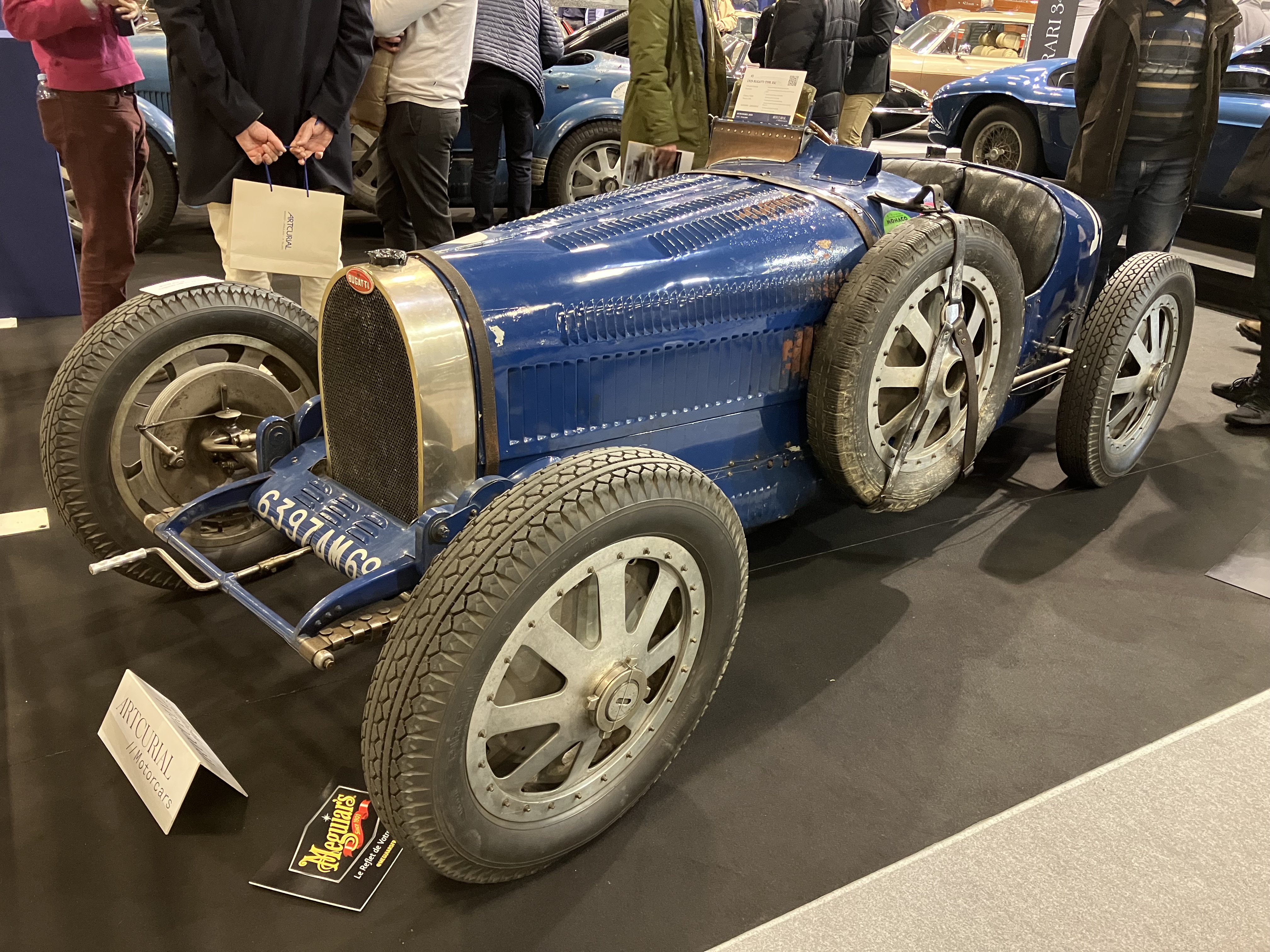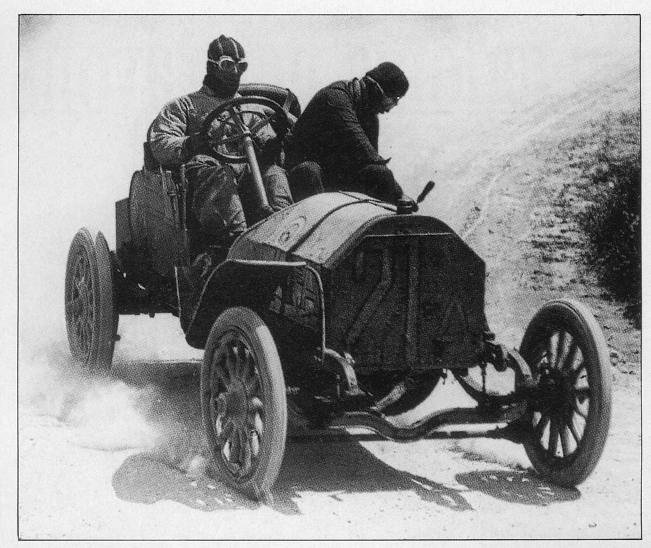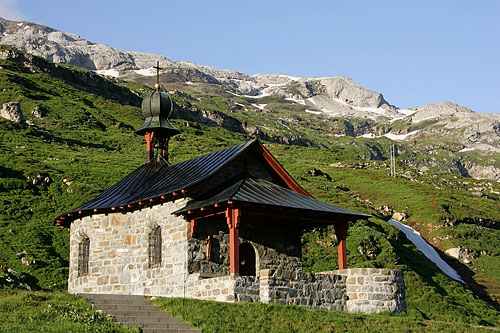|
Eliška Junková
Eliška Junková-Khásová (born Alžběta Pospíšilová; 16 November 1900 – 5 January 1994), also known as Elisabeth Junek, was a Czech automobile racer. She is regarded as one of the most significant drivers in Grand Prix motor racing history, and was the first woman to win a Grand Prix event. Early life Junková was born on 16 November 1900, in Olomouc, Moravia, Austria-Hungary listed in the registrar's office as Bětka ("Betty") Pospíšilová. The sixth of eight children, born to a locksmith in Olomouc, she was nicknamed ''smíšek'' at an early age for her ever-present smile. Following the end of World War I, when her native Moravia became part of the new republic of Czechoslovakia, she found work in the Olomouc branch of the Pražská úvěrová banka (Prague Credit Bank) thanks to her multilingual skills, honed through her desire to travel the world. At the age of sixteen, Junková got a job at a bank, where she met young banker Vincenc "Čeněk" Junek. He was severa ... [...More Info...] [...Related Items...] OR: [Wikipedia] [Google] [Baidu] |
Olomouc
Olomouc (; ) is a city in the Czech Republic. It has about 103,000 inhabitants, making it the Statutory city (Czech Republic), sixth largest city in the country. It is the administrative centre of the Olomouc Region. Located on the Morava (river), Morava River, the city is the ecclesiastical metropolis and was a historical co-capital city of Moravia, before having been occupied by the Military of the Swedish Empire, Swedish army during the Thirty Years' War. The historic city centre is well preserved and is protected as Cultural monument (Czech Republic)#Monument reservations, urban monument reservation. The Holy Trinity Column in Olomouc, Holy Trinity Column was listed as a UNESCO World Heritage Site in 2000 for its quintessential Baroque architecture, Baroque style and symbolic value. Administrative division Olomouc consists of 26 municipal parts (in brackets population according to the 2021 census): *Olomouc (13,446) *Bělidla (834) *Černovír (1,010) *Chomoutov (1,070) *Ch ... [...More Info...] [...Related Items...] OR: [Wikipedia] [Google] [Baidu] |
Jíloviště
Jíloviště is a municipality and village in Prague-West District in the Central Bohemian Region of the Czech Republic. It has about 700 inhabitants. Etymology The name is derived from the Czech word (i.e. 'clay') and translates as 'clay pit'. Geography Jíloviště is located about southwest of Prague. It lies mostly in the Brdy Highlands, only the southern and western part of the municipal territory extends into the Benešov Uplands. The highest point is the Kámen hill at above sea level. The Vrané Reservoir, built on the Vltava River, is located east of the municipality just outside the municipal territory. The Vltava briefly crosses the eastern part of the municipal territory. The Berounka River briefly flows along the western municipal border, outside the territoy of Jíloviště. History The first written mention of Jíloviště is in a deed of Zbraslav Monastery from 1347. The village was founded after 1342. The monastery owned Jíloviště until 1420, when the Huss ... [...More Info...] [...Related Items...] OR: [Wikipedia] [Google] [Baidu] |
Maserati
Maserati S.p.A. () is an Italian luxury vehicle manufacturer. Established on 1 December 1914 in Bologna, Italy, the company's headquarters are now in Modena, and its emblem is a trident. The company has been owned by Stellantis since 2021. Maserati was initially associated with Ferrari. In May 2014, due to ambitious plans and product launches, Maserati sold a record of over 3,000 cars in one month. This caused them to increase production of the Maserati Quattroporte, Quattroporte and Maserati Ghibli (M157), Ghibli models (the latter's production was halted in 2023). In addition, Maserati offers the Maserati GranTurismo and two SUV models, the Maserati Levante (the first ever Maserati SUV) and the Maserati Grecale. Maserati has placed a yearly production output cap at 75,000 vehicles globally. History The Maserati brothers The Maserati brothers, Alfieri Maserati, Alfieri (1887–1932), Bindo Maserati, Bindo (1883–1980), Carlo Maserati, Carlo (1881–1910), Ettore Maserati ... [...More Info...] [...Related Items...] OR: [Wikipedia] [Google] [Baidu] |
Emilio Materassi
Emilio Materassi (October 30, 1894 – September 9, 1928) was an Italian Grand Prix motor racing driver. Early life Born in Borgo San Lorenzo, near Florence, Italy, Emilio began working in a bicycle shop, learning the basics of applied mechanics. Later, he went to work in a car garage, where he developed a strong love for engines and cars. When he was in his twenties, Materassi took over the administration of his family business, selling wine, ropes and twine. Poor economic condition forced him to work as a bus driver for local services.Emilio Materassi, Museo Auto at |
Bugatti Type 35
The Bugatti Type 35 is an iconic race car design produced by Bugatti at their Molsheim premises between 1924 and 1930. It was extremely successful when raced by the factory works team. It was also bought by a diverse roster of privateer clientele from around the world. It pioneered the concept of a holistically conceived, race-ready car available for purchase. The arch/egg-shaped radiator is emblematic, as is the rear of the car. The tapered stern has been called a 'Bordino tail' and Ettore Bugatti may have been influenced by the shape of the earlier Fiat 804 driven and modified by Pietro Bordino. The car has also become synonymous with being the first to use cast alloy wheels. The Type 35 was phenomenally successful, winning over 1,000 races in its time. It took the Grand Prix World Championship in 1926 after winning 351 races and setting 47 records in the two prior years. At its height the Type 35 averaged 14 race wins per week. Bugatti won the Targa Florio for five cons ... [...More Info...] [...Related Items...] OR: [Wikipedia] [Google] [Baidu] |
Sicily
Sicily (Italian language, Italian and ), officially the Sicilian Region (), is an island in the central Mediterranean Sea, south of the Italian Peninsula in continental Europe and is one of the 20 regions of Italy, regions of Italy. With 4.7 million inhabitants, including 1.2 million in and around the capital city of Palermo, it is both the largest and most populous island in the Mediterranean Sea. Sicily is named after the Sicels, who inhabited the eastern part of the island during the Iron Age. Sicily has a rich and unique culture in #Art and architecture, arts, Music of Sicily, music, #Literature, literature, Sicilian cuisine, cuisine, and Sicilian Baroque, architecture. Its most prominent landmark is Mount Etna, the tallest active volcano in Europe, and one of the most active in the world, currently high. The island has a typical Mediterranean climate. It is separated from Calabria by the Strait of Messina. It is one of the five Regions of Italy#Autonomous regions with s ... [...More Info...] [...Related Items...] OR: [Wikipedia] [Google] [Baidu] |
Targa Florio
The Targa Florio was a public road Endurance racing (motorsport), endurance automobile race held in the mountains of Sicily near the island's capital of Palermo, Sicily, Palermo. Founded in 1906 Targa Florio, 1906, it was the oldest sports car racing event, part of the World Sportscar Championship between 1955 and 1973. While the first races consisted of a whole tour of the island, the track length in the race's last decades was limited to the of the Circuito delle Madonie, Circuito Piccolo delle Madonie, which was lapped 11 times. After 1973, it was a national sports car event until it was discontinued in 1977 due to safety concerns. It has since been run as Targa Florio Rally, a rallying event, and is part of the Italian Rally Championship. History The race was created in 1906 Targa Florio, 1906 by the wealthy pioneer race driver and automobile enthusiast, Vincenzo Florio, who had started the Coppa Florio race in Brescia, Lombardy in 1900. The Targa also claimed to be a w ... [...More Info...] [...Related Items...] OR: [Wikipedia] [Google] [Baidu] |
Klausenpass
Klausen Pass (German: ''Klausenpass''; elevation: ) is a high mountain pass in the Swiss Alps connecting Altdorf, Uri, Altdorf in the canton of Uri with Linthal, Glarus, Linthal in the canton of Glarus. Somewhat unusually, the boundary between the two cantons does not lie at the summit of the pass, but some down the slope towards Linthal, with the summit being in Uri. The Klausen Pass is crossed by a paved road, which has a length, between Altdorf and Linthal, of . The road approaches the summit from Altdorf via the Schächen Valley communities of Bürglen, Uri, Bürglen, Spiringen and Unterschächen, and descends to Linthal via the Urnerboden. The road is normally closed between October and May, due to the high snowfall on the pass. During the open period, a PostBus Switzerland service crosses the pass several times a day, connecting Fluelen railway station, Fluelen station, on the Gotthard railway and Lake Lucerne, with Linthal railway station, Linthal station, the terminus o ... [...More Info...] [...Related Items...] OR: [Wikipedia] [Google] [Baidu] |
Ettore Bugatti
Ettore Arco Isidoro Bugatti (15 September 1881 – 21 August 1947) was a Franco-Italian automobile designer and manufacturer. He received French citizenship in 1946 and is remembered as the founder and proprietor of the automobile manufacturing company Automobiles E. Bugatti, which he founded in 1909 in the then German town of Molsheim in the Alsace region of what is now France. Bugatti died in Paris, and is buried in Dorlisheim, France. Family origin and early life Bugatti was born into an artistic family in Milan, Italy. He was the elder son of Carlo Bugatti (1856–1940), an important Italian Art Nouveau furniture and jewellery designer, and his wife, Teresa Lorioli (1862–1935). His younger brother, Rembrandt (1884–1916), was a renowned animal sculptor. His aunt, Luigia Bugatti, was the wife of the painter Giovanni Segantini. His paternal grandfather, Giovanni Luigi Bugatti, was an architect and sculptor. Bugatti's father intended that he follow a conventional technic ... [...More Info...] [...Related Items...] OR: [Wikipedia] [Google] [Baidu] |
Třemošná
Třemošná (; ) is a town in Plzeň-North District in the Plzeň Region of the Czech Republic. It has about 5,100 inhabitants. Administrative division Třemošná consists of two municipal parts (in brackets population according to the 2021 census): *Třemošná (4,268) *Záluží (830) Etymology The name Třemošná evolved from the word ''střemcha'', i.e. ' bird cherry'. Geography Třemošná is located about west of Plzeň. It lies in the Plasy Uplands. The highest point is at above sea level. The Třemošná River flows through the town. The Bělá Stream joins the Třemošná in the western part of the municipal territory. History The first written mention of Třemošná is from 1181. The village changed owners very often. Among the owners in the 13th–15th centuries were the chapter in Mělník, the monastery in Plasy, and various lower noblemen. In 1509, Třemošná was acquired by Albrecht of Kolowrat, later it was bought by Jan and Bernard Waldstein. In the la ... [...More Info...] [...Related Items...] OR: [Wikipedia] [Google] [Baidu] |




